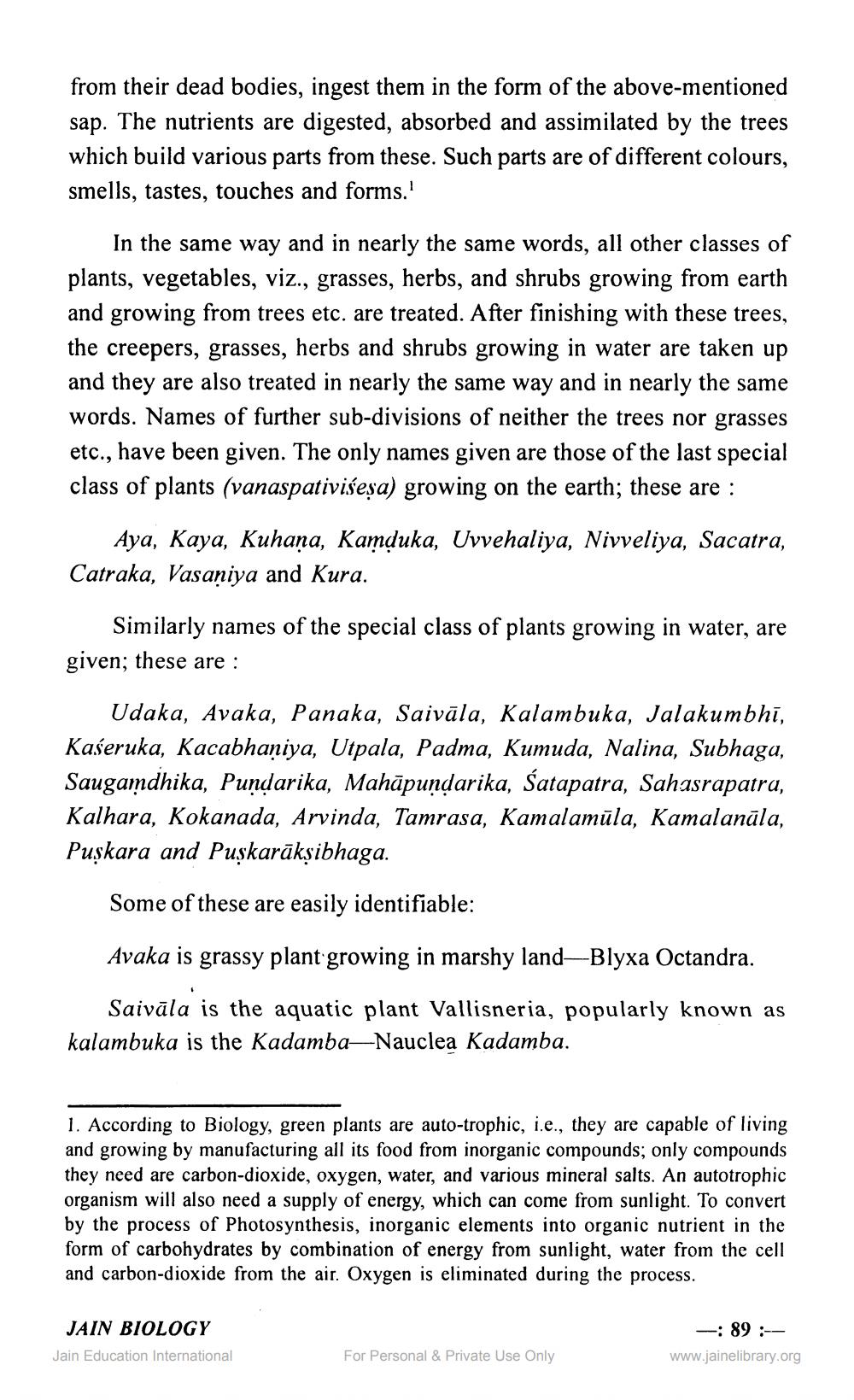________________
from their dead bodies, ingest them in the form of the above-mentioned sap. The nutrients are digested, absorbed and assimilated by the trees which build various parts from these. Such parts are of different colours, smells, tastes, touches and forms.
In the same way and in nearly the same words, all other classes of plants, vegetables, viz., grasses, herbs, and shrubs growing from earth and growing from trees etc. are treated. After finishing with these trees, the creepers, grasses, herbs and shrubs growing in water are taken up and they are also treated in nearly the same way and in nearly the same words. Names of further sub-divisions of neither the trees nor grasses etc., have been given. The only names given are those of the last special class of plants (vanaspativiseșa) growing on the earth; these are :
Aya, Kaya, Kuhana, Kamduka, Uvvehaliya, Nivveliya, Sacatra, Catraka, Vasaņiya and Kura.
Similarly names of the special class of plants growing in water, are given; these are :
Udaka, Avaka, Panaka, Saivāla, Kalambuka, Jalakumbhi, Kaseruka, Kacabhaniya, Utpala, Padma, Kumuda, Nalina, Subhaga, Saugamdhika, Pundarika, Mahāpundarika, Šatapatra, Sahasrapatra, Kalhara, Kokanada, Arvinda, Tamrasa, Kamalamūla, Kamalanāla, Puşkara and Puşkarākṣibhaga.
Some of these are easily identifiable:
Avaka is grassy plant growing in marshy land—Blyxa Octandra.
Saivāla is the aquatic plant Vallisneria, popularly known as kalambuka is the Kadamba-Nauclea Kadamba.
1. According to Biology, green plants are auto-trophic, i.e., they are capable of living and growing by manufacturing all its food from inorganic compounds; only compounds they need are carbon-dioxide, oxygen, water, and various mineral salts. An autotrophic organism will also need a supply of energy, which can come from sunlight. To convert by the process of Photosynthesis, inorganic elements into organic nutrient in the form of carbohydrates by combination of energy from sunlight, water from the cell and carbon-dioxide from the air. Oxygen is eliminated during the process.
JAIN BIOLOGY Jain Education International
-: 89:-- www.jainelibrary.org
For Personal & Private Use Only




